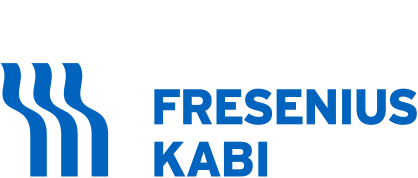Fresenius Kabi Announces U.S. Availability of Omegaven® (fish oil triglycerides) Injectable Emulsion
First and only FDA-approved lipid emulsion to address nutritional needs of pediatric patients suffering from life-threatening condition
December 10, 2018
LAKE ZURICH, Ill., December 10, 2018 – Fresenius Kabi, a global health care company that specializes in medicines and technologies for infusion, transfusion and clinical nutrition, announced today that Omegaven® (fish oil triglycerides) injectable emulsion is now commercially available in the United States. This novel lipid had previously been available only for compassionate use in the U.S.
Omegaven is an intravenous lipid emulsion that provides calories and fatty acids for pediatric patients with parenteral nutrition-associated cholestasis, or PNAC. Omegaven is the first and only FDA-approved fish oil lipid emulsion for this condition.
“Omegaven fills a critical gap in the current nutrition management of pediatric patients suffering from PNAC. Previously, clinicians had no options for the provision of lipids for these vulnerable children, who because of PNAC, are at serious risk of liver failure,” said Gordon S. Sacks, Pharm.D., BCNSP, FASPEN, FCCP, senior director, medical affairs for parenteral nutrition at Fresenius Kabi USA. “Fresenius Kabi is pleased Omegaven is now widely available to meet the short and long-term calorie and fatty acid needs of PNAC pediatric patients that were previously unmet.”
Cholestasis is a condition in which bile is not released from the liver. PNAC may occur following long-term parenteral nutrition administration in pediatric patients with temporary or permanent intestinal failure.1 Development of PNAC is associated with increased morbidity and mortality and can progress to liver fibrosis, hepatic failure, and death.2
About Omegaven®
Omegaven is indicated as a source of calories and fatty acids in pediatric patients with parenteral nutrition-associated cholestasis (PNAC). Omegaven is not indicated for the prevention of PNAC. It has not been demonstrated that Omegaven prevents PNAC in parenteral nutrition (PN)-dependent patients. It has not been demonstrated that the clinical outcomes observed in pediatric patients treated with Omegaven are a result of the omega-6: omega-3 fatty acid ratio of the product.
In clinical trials, data collected from Boston Children’s Hospital, Texas Children’s Hospital and UCLA Medical Center demonstrated that pediatric patients administered Omegaven attained and maintained age-appropriate growth.
Patients on Omegaven showed improvement in liver function parameters evaluated and also experienced an increase in plasma platelet concentrations.
Omegaven is the first U.S.-approved lipid emulsion made entirely from fish oil. It is available as a 5 g/50 mL and 10 g/100 mL (0.1 g/mL) injectable emulsion in a single-dose bottle.
IMPORTANT SAFETY INFORMATION
Prior to administration, correct severe fluid and electrolyte disorders and measure serum triglycerides to establish a baseline level. Initiate dosing in PN-dependent pediatric patients as soon as direct or conjugated bilirubin levels are 2 mg/dL or greater. The recommended daily dose (and the maximum dose) in pediatric patients is 1 g/kg/day. Administer Omegaven until direct or conjugated bilirubin levels are less than 2 mg/dL or until the patient no longer requires PN.
Omegaven is contraindicated in patients with a known hypersensitivity to fish or egg protein or to any of the active ingredients or excipients, severe hemorrhagic disorders due to a potential effect on platelet aggregation, severe hyperlipidemia or severe disorders of lipid metabolism characterized by hypertriglyceridemia (serum triglyceride concentrations greater than 1,000 mg/dL).
Risk of Death in Preterm Infants due to Pulmonary Lipid Accumulation: Deaths in preterm infants after infusion of soybean oil-based intravenous lipid emulsions have been reported in medical literature. Autopsy findings in these preterm infants included intravascular lipid accumulation in the lungs. The risk of pulmonary lipid accumulation with Omegaven is unknown. Preterm and small-for-gestational-age infants have poor clearance of intravenous lipid emulsion and increased free fatty acid plasma levels following lipid emulsion infusion. This risk due to poor lipid clearance should be considered when administering intravenous lipid emulsions. Monitor patients receiving Omegaven for signs and symptoms of pleural or pericardial effusion.
Hypersensitivity Reactions: Monitor for signs or symptoms. Discontinue infusion if reaction occurs.
Risk of Infections, Fat Overload Syndrome, Refeeding Syndrome, and Hypertriglyceridemia: Monitor for signs and symptoms; monitor laboratory parameters.
Aluminum Toxicity: Increased risk in patients with renal impairment, including preterm infants.
Monitoring and Laboratory Tests: Routine laboratory monitoring is recommended, including serum triglyceride concentrations and laboratory evidence of essential fatty acid deficiency.
The most common adverse drug reactions (>15%) are: vomiting, agitation, bradycardia, apnea and viral infection.
To report SUSPECTED ADVERSE REACTIONS, contact Fresenius Kabi USA, LLC at 1-800-551-7176, option 5, or FDA at 1-800-FDA-1088 or www.fda.gov/medwatch.
This Important Safety Information does not include all the information needed to use Omegaven safely and effectively. Please see accompanying full prescribing information (https://tinyurl.com/y88rsmp5) for Omegaven (fish oil triglycerides) injectable emulsion for intravenous use. Full prescribing information is also available at www.fresenius-kabi.com/us.
About Fresenius Kabi
Fresenius Kabi (www.fresenius-kabi.com/us) is a global health care company that specializes in medicines and technologies for infusion, transfusion and clinical nutrition. The company’s products and services are used to help care for critically and chronically ill patients. The company’s U.S. headquarters is in Lake Zurich, Illinois. The company’s global headquarters is in Bad Homburg, Germany.
1 Cahova M, et al. Nutrients. 2017;9(9); 2. Rangel ST, et al. Journal of Pediatric Surgery 2012; 47:225-240.
2 Tillman E, et al. J Pediatr Pharmacol Ther. 2011;16(1):31-38.
